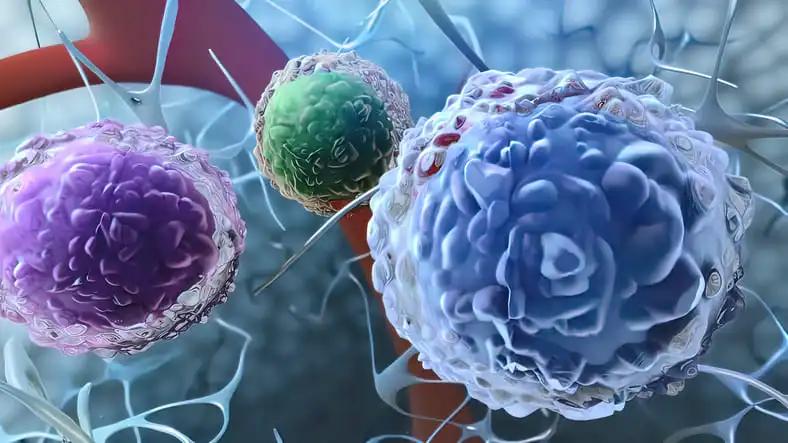KEY TAKEAWAYS
- A phase 3 study aimed to classify non-squamous NSCLC subtypes and examine their association with PD-L1 status and treatment outcomes.
- The study used SP263 immunohistochemistry to determine tumor PD-L1 levels and analyzed OS/PFS based on NMF subtypes.
- Researchers identified 4 distinct molecular subtypes in treatment-naive, non-squamous metastatic NSCLC, differing in immune-cell profiles and PD-L1 expression.
The phase 3 IMpower150 trial exhibited notable enhancements in progression-free survival (PFS) and overall survival (OS) in chemotherapy-naive patients with non-squamous metastatic NSCLC when treated with atezolizumab plus bevacizumab plus carboplatin-paclitaxel (ABCP) compared to bevacizumab plus carboplatin-paclitaxel (BCP).
These benefits were observed irrespective of tumor PD-L1 status. Consequently, ABCP gained approval as a frontline therapy for metastatic non-squamous NSCLC. No discernible clinical advantage was noted when comparing atezolizumab plus carboplatin-paclitaxel (ACP) versus BCP among the intent-to-treat population.
The study aimed to define the molecular subtypes of non-squamous NSCLC and investigate the interrelation between molecular subtype, PD-L1 status, and clinical outcomes with ABCP, ACP, and BCP treatments.
The RNA sequencing of 564 primary pre-treatment tumor samples from non-squamous NSCLC patients in the IMpower150 trial underwent analysis across the ACBP (n=195), ACP (n=178), and BCP (n=185) treatment groups; 6 samples were from untreated patients. Utilizing non-negative matrix factorization (NMF) on variably expressed genes helped categorize distinct molecular subtypes within non-squamous tumors.
Tumor PD-L1 levels for each subtype were determined using SP263 immunohistochemistry (Ventana). NMF analysis was used to assess overall survival (OS) and progression-free survival (PFS) within each treatment arm based on these defined molecular subtypes.
Four distinct molecular subtypes emerged: NMF1 (n=103) enriched in endothelial cells, neutrophils, and basal/squamous-like cells. NMF2 (n=184) exhibited mature dendritic cells, macrophages, monocytes, and proliferation. NMF3 (n=158) highlighted adenocarcinoma prevalence with lower squamous and CD8+ T-cell levels. NMF4 (n=119) demonstrated a lymphocyte-inflamed profile, marked by epithelial-to-mesenchymal transition and various immune cell enrichments.
Notably, PD-L1 expression was significantly higher in NMF2 and NMF4 than NMF1 and NMF3 (P=7.34e-10). Patients with NMF1 and NMF4 experienced longer progression-free survival (PFS) with ABCP (P=0.009 and P<0.0001, respectively). NMF2 and NMF3 groups didn’t show PFS differences among treatments. Overall survival (OS) favored ABCP in NMF1 (P=0.019) and exhibited potential benefit in NMF4 (P=0.059).
Four distinct molecular subtypes were delineated in treatment-naive, non-squamous, and metastatic NSCLC, each showcasing unique immune-cell and tumor microenvironment characteristics.
Two subtypes exhibited elevated tumor PD-L1 expression but differed in immune-cell compositions, impacting clinical responses to ABCP treatment. Specifically, NMF4 could potentially pinpoint a subset of advanced non-squamous NSCLC patients who might uniquely benefit from initial treatment with ACBP.
Additional research is warranted to investigate these findings and their implications for tailored treatment approaches.
Source: https://jitc.bmj.com/content/11/Suppl_1/A684
Clinical Trial: https://clinicaltrials.gov/study/NCT02366143
Lu T, Socinski MA, Reck M, et al601 Identification of non-squamous NSCLC molecular subtypes and association with outcomes in the phase 3 IMpower150 study of 1L atezolizumab ± bevacizumab + carboplatin-paclitaxel in metastatic NSCLCJournal for ImmunoTherapy of Cancer 2023;11:doi: 10.1136/jitc-2023-SITC2023.0601.



